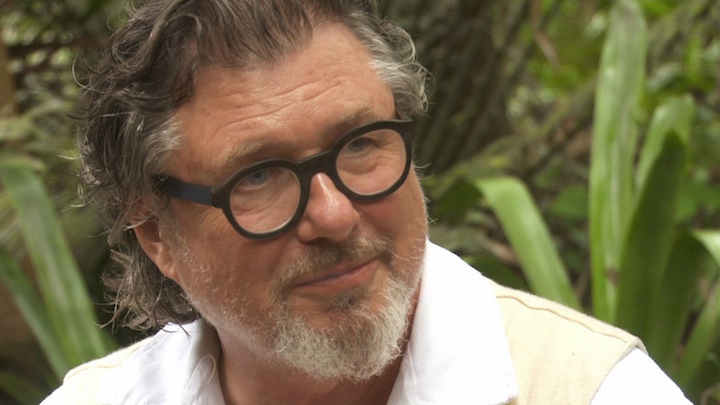
Alonzo King Lines Ballet collaborates with poet Bob Holman
Collaboration is core to the ballets presented by Alonzo King Lines Ballet. Over the years the company has collaborated with mezzos and bassos singing classical art songs, jazz singers, jazz pianists, shao lin practitioners, percussionists from the sub-Asian continent, Central Africa and the world of American Rock. King has also set dance to music more predictably associated with ballet: music of Corelli, Poulenc, Bach and Shostakovich.
This year the company is collaborating with poet Bob Holman. An activist who has long been associated with the New York poetry community, spoken word and oral poetry, Holman has spent the last few years developing poetry projects that point to the loss of languages around the world. Although there are currently some 6,500 languages in the world, it is predicted that over half of those languages will disappear by the end of this century. In 2010 Holman founded the Endangered Language Alliance with American linguists Daniel Kaufman and Juliette Blevins.
PBS aired Holman’s Language Matters in 2015. The documentary looks closely at three languages – the Aboriginal languages on a small island off northern Australia, some of which have only one speaker or are contained only in recordings or songs; Welsh, which has become a lively language despite its near disappearance in the mid-twentieth century, and Hawaiian, which continues to struggle to survive after having nearly disappeared in the twentieth century.
Let the Body Speak was an evening of endangered languages hosted by Holman, and presented by Lines Ballet as part of their spring events. The program held at the Wilsey Center for Opera introduced the audience to the ideas behind Holman’s language project, and gave a taste of the ballet company’s spring program, which runs from May 4-14 at Yerba Buena Center for the Arts.
The program was introduced in Chochenya, an Ohlone language, by cultural activist and researcher Vincent Medina. The Ohlone were the Native American tribes in the San Francisco Bay Area, stretching from the Pacific to the Pleasanton area and from Napa to the lower Salinas Valley. Medina pointed out that the War Memorial Veterans Building, where the audience was sitting, was once the home of an Ohlone tribe. The tribes and their culture waned under the Mission era, victims of European disease and harsh colonialization.
Medina was followed by hula master Michael Yamashita and Kuma Liko Puha, a native Hawaiian chanter. Hula is one of the few dance forms that requires words. It cannot exist without the text, which is the physical manifestation of the words. Hand movements echo the text in a series of gestures that are mimetic and stylized. Feet and hips support those gestures in a series of formal movements.
The dance was followed by an impassioned rap by Jocelyn Kapumealani Ng, who was raised on the island of O’ahu. Looking like she had walked out of an island forest, Ng had palm leaves sprouting from her shoulders like foot-long epaulettes. Her left arm was stained red with black scribblings, and the fingers of her hand ended in long gnarly twigs painted white and black. She sang of her struggles with her native language, almost lost to her family by the necessities of conforming to an occupying culture.
Holman talked about his poetry project, Khonsay: Poem of Many Languages. In the Boro tongue of North India, which is also an endangered language, khonsay means to pick up something with great care, because it is rare or scarce. In this 15-minute film, each line of a poem is spoken by a poet who writes in an endangered language.
Holman then read a long poem that provided the acoustic accompaniment to five long-limbed, exquisitely moving dancers from Lines Ballet – Adji Cissoko, Madeleine DeVires, Babatunji, James McGowan and Michael Montgomery. The physical beauty of the languages was also apparent in the projections above the dancers, written in the many scripts of language from around the world. It was a thrilling sample of the performances to be presented in three weeks at Yerba Buena Center for the Arts Theater.
The evening ended with Walan Amana, a Native American rock band that presents in the Nisenan language. Nisenan culture is one of the many Native American groups situated in California’s Central Valley, between the Sacramento River and the Sierra Nevada, and from the region north of Sacramento and south to the Cosmenes River. The eight-member band sang excerpts from their Maidu rock opera, Something Inside Is Broken, with Alan Wallace’s Nisenan lyrics. There was something both tender and poignant in their singing. And in the evening itself.
– Jaime Robles
For information and tickets for Alonzo King Lines Ballet’s spring season, visit https://linesballet.org.
Photo: Bob Holman
